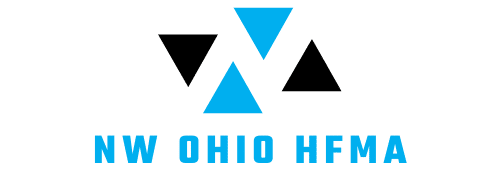What Are the Strategies for Small Businesses to Optimize Their Landing Pages for Higher Leads?

When it comes to digital marketing, a well-optimized landing page could be the difference between a thriving small business and one that fades into obscurity. An effective landing page serves as a powerful tool that converts casual browsers into dedicated customers. The primary objective is to capture leads that enable further engagement with the prospects.
However, it’s not just about creating a landing page; it’s about optimizing the landing page. For small businesses, this can feel like a daunting task. But don’t worry. We’ve got you covered. Here are some proven strategies to help you optimize your landing pages for higher leads.
A lire également : How Can Small Businesses Implement a Successful Affiliate Marketing Program?
Craft a Compelling Headline
The header is the first thing visitors see when they land on your page. It needs to be catchy and compelling to capture their attention. The header should also be an accurate representation of what the page is about.
Your header should be clear, concise, and to the point. It should offer the potential lead an immediate understanding of the product or service being offered. The key here is to strike a balance between creativity and clarity—your audience should not have to decipher what you’re trying to convey.
A découvrir également : What Are the Best Employee Engagement Strategies for Small Businesses to Boost Morale?
Additionally, your header should highlight the value of your offer. If you have a unique selling proposition (USP), this is the perfect place to showcase it. Your USP sets you apart from your competitors and gives potential leads a reason to choose your business over others.
Use High-Quality Images and Videos
Visual content is a powerful driver of user engagement. High-quality images and videos not only make your landing page more appealing but also help convey your message more effectively. Incorporate visuals that are relevant to your product or service and resonate with your target audience.
Utilize images and videos to demonstrate what you’re offering, how it works, and why it’s beneficial. This would give your potential leads a clear picture of what they can expect from your product or service. Images can also be used to showcase testimonials or reviews from previous customers, which can build trust and credibility.
Moreover, ensure that your images and videos are optimized for speed. Slow-loading visuals can increase the bounce rate on your landing page and cost you potential leads.
Create a Clear and Strong Call-to-Action (CTA)
A Call-to-Action (CTA) is a crucial component of any landing page. It directs your visitors to take the desired action, such as signing up for a newsletter, downloading an eBook, or purchasing a product. Without a clear and strong CTA, your landing page is akin to a car without a steering wheel—it simply won’t lead anywhere.
Your CTA should be simple, straightforward and compelling. It should tell your visitors exactly what to do next. Using action-oriented language can make your CTA more effective. For example, instead of "Submit", use "Download Your Free eBook Now" or "Start Your Free Trial Today".
Placement of the CTA is also important. It should be placed in a prominent position where it’s easily visible. In addition, you can use design elements like color, contrast, and whitespace to make your CTA stand out.
Implement A/B Testing
A/B testing, also known as split testing, involves creating two versions of your landing page with changes to one element, such as the headline, CTA, or images, and showing them to different segments of your audience. From there, you can observe which version drives more conversions.
Implementing A/B testing allows you to understand what works and what doesn’t on your landing page. It provides you with valuable insights that can guide your optimization efforts.
Remember, even small changes can lead to significant results. Don’t be afraid to experiment with different headlines, CTAs, or images. The key is to test, measure, and iterate until you find the most effective version of your landing page.
Optimize for Mobile
According to Statista, as of 2021, over 50% of all web traffic comes from mobile. This means that a significant portion of your potential leads might be accessing your landing page from their smartphones or tablets. If your landing page is not optimized for mobile, you might be missing out on these potential leads.
A mobile-optimized landing page should have a responsive design that adjusts to fit different screen sizes. It should also load quickly—slow-loading pages can frustrate mobile users and increase your bounce rate.
Furthermore, elements like text, images, and CTAs should be clearly visible and easy to interact with on a small screen. The navigation should be intuitive, allowing mobile users to easily navigate your landing page and take the desired action.
Leverage Social Proof
Social proof is a psychological phenomenon where people tend to follow the actions of others, making it a powerful tool for boosting the effectiveness of your landing page. Testimonials, reviews and case studies can significantly impact your conversion rates by building trust and credibility for your small business.
Make sure your social proof is relevant and genuine. Choose testimonials that align with your target audience and address any potential objections they might have. Reviews should showcase real experiences from real customers. Case studies, on the other hand, can give potential leads an in-depth look at how your product or service has benefited others.
Instead of simply listing testimonials or reviews, consider using images or videos of your satisfied customers, or even including their names and positions if applicable. This can add a layer of authenticity and make your social proof more compelling. Remember, authenticity speaks louder than exaggeration.
You can also showcase any awards or recognitions your small business has received. Pictures of your team members or behind-the-scenes images can add a human touch to your landing page, making your business more relatable and trustworthy.
Focus on Load Time and Page Speed
The load time of your landing page is crucial for the user experience and can significantly affect your conversion rate. A slow-loading page can result in high bounce rates, as visitors are likely to leave if they have to wait too long. In fact, according to research by Google, 53% of mobile users abandon sites that take longer than three seconds to load.
To improve your page speed, start by optimizing your images and videos. Compress them without compromising their quality, and avoid using unnecessarily large files. You should also minimize the use of heavy scripts and plugins that can slow down your page.
Consider using a content delivery network (CDN) to speed up delivery of your web content. A CDN can help reduce the load time by storing copies of your website on servers located around the world, delivering content to users from the server closest to them.
Another strategy for improving page speed is enabling browser caching. This allows users’ browsers to store copies of your website’s files, reducing the need to download the same content each time they visit.
Conclusion
Optimizing your landing page for higher leads can seem complicated, but by implementing the strategies discussed above, you’re likely to see significant improvements. Remember to focus on creating a compelling headline, using high-quality visuals, crafting a clear and strong call-to-action, implementing A/B testing, optimizing for mobile, leveraging social proof, and focusing on load time and page speed.
Remember that optimization is an ongoing process. Continually testing, learning, and iterating is the key to success. Stay abreast with the latest trends and best practices in landing page optimization to keep your small business competitive in the digital space. The effort you put into optimization will pay off in the form of increased leads, conversions, and ultimately, growth for your small business.
